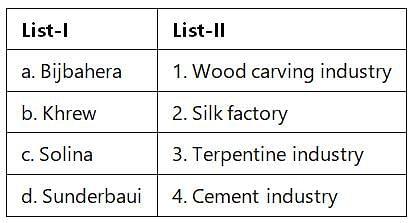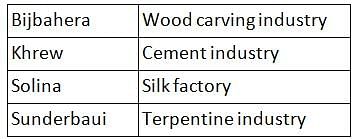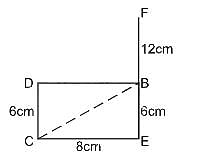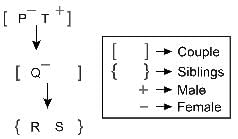JKSSB Patwari Mock Test - 5 - JKSSB Patwari MCQ
30 Questions MCQ Test JKSSB Patwari Mock Test Series 2025 - JKSSB Patwari Mock Test - 5
Chronologically arrange the following sources in the order they connected through the 'hydrological cycle' (from first to last)
Which of these is not seen as a standard of human rights by the International Covenant on Economic, Social and Cultural Rights?
What was the primary priority for poor nations according to the NAM?
The past two decades of globalisation has seen rapid movements in
Which one of the following soil is economically very important in Kashmir?
Consider the following statements.
- The Jammu Animal Husbandry Department was established in 1985 by the State Government.
- The Department monitors overall matters relating to production, protection and improvement of livestock, dairy and poultry of the state.
Which of the following statement is/are correct.
Direction: A word in capital letters is followed by four words. Choose the word that is most nearly opposite in meaning to the word given in capital letters.
SUBLIME
Photoshop is a software program used extensively for image editing, graphic design, and digital art. Which of the following company has the rights to sell this software?
Which of the following is not a basic step in creating a worksheet?
Direction: Study the following information carefully and answer the given questions.
Among five friends, each got a different % of marks in the examination. Poonam scored more than Ben but less than Ajay. Ajay scored 70% marks. Shreya scored less marks than only Kim. The one who scored the minimum marks scored 65% marks and the one who scored the highest, scored 87% marks.
Q. Who scored the second lowest marks?
Direction: Study the following information and answer the given questions carefully.
Point B is 12 cm south of point F. Point C is 8 cm west of point E which is 18 cm away in the south direction with respect to F. B is east of D which is 6 cm north of point C.
Q. In which direction is point D with respect to point E?
Directions: Read the following information carefully and answer the questions given below.
A # B means A is the father of B
A % B means A is the mother of B
A @ B means A is the grandchild of B
A $ B means A is the mother-in-law of B
A * B means A is the sibling of B
Which of the following is true as per the equation?
Equation: P # Q % R * S @ T % Q
Directions: Read the following information carefully and answer the questions given beside.
In a certain code language,
“Solid Light Crazy” is coded as “B3 W19 G12”
“Distance Time Speed” is coded as “V20 W19 V4”
“Mixture Comes Out” is coded as “H3 G15 V13”
What will be the code for “Time”?
Directions : In each of the following questions a statement is given, followed by two conclusions. Give answer :
Statements : The old order changed yielding place to new.
Conclusions :
I. Change is the law of nature.
II. Discard old ideas because they are old.
If the last four letters of the word 'CONCENTRATION' are written in reverse order and next three in the reverse order. Counting from the end, which letter would be eighth in the new arrangement from left ?
Directions: Read the following information carefully and answer the questions given beside.
In a certain code language,
“Matching extinct a problem” is coded as “rx ik mq mp”
“Problem is solved” is coded as “ik uz yj”
“Green is matching” is coded as “yj mp nt”
“Extinct of oral” is coded as “mq vq jb”
What is the code of “matching of”?
In this questions, a number series is given with one term missing. Choose the correct alternative that will continue the same pattern and fill in the black spaces.
Q. 12, 32, 72, 152, (____)























